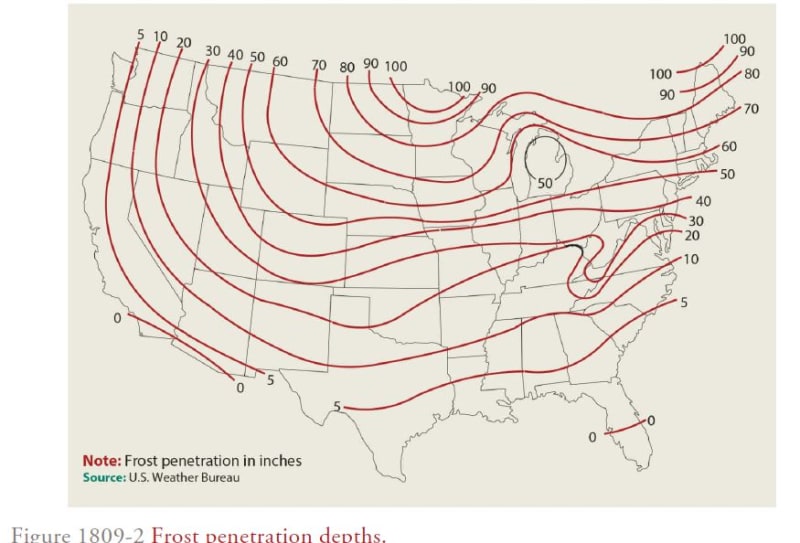CodyScottThomas
Structural
- Mar 1, 2022
- 3
Hello all, this is my first post here so please bear with me.
Where do you go to find accurate frost depth/line values?
At my job, we often have to design footers/foundations rapidly so as to get them to a costumer for the purposes of an estimate. Because everything needs done ASAP, contacting local municipalities all over the US (as well as internationally) every time we have a new location that needs a design is far from feasible. I do my best with online maps, local documents, and the like when trying to get reasonable numbers for frost depth, but I've never found any one source for this information. Occasionally, I reference Unified Facilities Criteria (UFC) which does help sometimes, but the locations that are in that document are often very scattered (or worse, all in the same place and not near where you would like them to be).
In a perfect world, the ATC website I use regularly (see below) for wind and seismic would have frost depth as well, but that's not the case. I would love it if something similar exists for frost depth.
 hazards.atcouncil.org
hazards.atcouncil.org
Thank you all in advance for the input.
Where do you go to find accurate frost depth/line values?
At my job, we often have to design footers/foundations rapidly so as to get them to a costumer for the purposes of an estimate. Because everything needs done ASAP, contacting local municipalities all over the US (as well as internationally) every time we have a new location that needs a design is far from feasible. I do my best with online maps, local documents, and the like when trying to get reasonable numbers for frost depth, but I've never found any one source for this information. Occasionally, I reference Unified Facilities Criteria (UFC) which does help sometimes, but the locations that are in that document are often very scattered (or worse, all in the same place and not near where you would like them to be).
In a perfect world, the ATC website I use regularly (see below) for wind and seismic would have frost depth as well, but that's not the case. I would love it if something similar exists for frost depth.
ATC Hazards by Location
Thank you all in advance for the input.




